Marie Munter (Johnson) and her daughter, Jean Pryor and her son Dennis and Beatty Zimmerman (Stone) and her son Bob, Hibbing, 1944. Though living in Duluth Beatty had come back to Hibbing to visit her school friends.
Now the fifth daughter on the twelfth night
Told the first father that things weren’t right
My complexion she said is much too white
He said come here and step into the light he says hmm you’re right
Let me tell the second mother this has been done
But the second mother was with the seventh son
And they were both out on Highway 61.
Some Sunday Morning, Accentuate The Positive.
May 12, 1946 – Mother’s Day Celebration – Duluth, MN
He stamped his foot and commanded attention. Bobby said, ‘If everybody in this room will keep quiet, I will sing for my grandmother.”
June 9, 1946 – Aunt Irene’s Wedding Reception – Covenant Club, Duluth, MN
Bob’s first paid performance. An uncle said, proferring a handful of bills, “You’ve got to sing.” He refused. The pleading increased, although the fee remained the same. “So he sang,” his mother said, but not until he had announced: ‘If it’s quiet, I will sing.’” … Everyone was quiet as Bob’s two-song repertoire was repeated. Again the audience cheered, and Bobby walked over to his uncle and took the twenty-five dollars. He approached his mother with his first gate receipts. “Mummy,” he told her, “I’m going to give the money back.” He returned to his uncle and handed him the money. He nearly upstaged the bridal couple.
Bob Zimmerman in grade one at Alice School.
(circa) 1951? Racing Clinic for Hibbing Junior Chamber of Commerce
Prospective soapbox derby racer, Robert Zimmerman (2nd on right) wearing a billed-cap, lays hands on a steering wheel for his derby car. Did the racer get built? Did he race it? Is this the earliest known photograph of Bob in a hat?
https://www.edlis.org/hat — Hibbing‘
Bob Zimmerman 1952
Bob Zimmerman, 12 years old, 6th grade, Washington School, 1953.
Or is it? Bob Zimmerman had Kindergarten in Duluth at the Nettleton Elementary School— 108 East 6th Street, Duluth, MN 55805 (1st Avenue East and Sixth Street). Then in Hibbing he attended Grade 1 at the Alice School and then Grade 2-12 at Hibbing High School. So the published sources which say this is Washington School are wrong.
Unusually Hibbing High School had Kindergarten to Grade 12 classes. The graduating class of 1962 was the last to have people attend all grades from Kindergarten to Grade 12. So from 1950 it was being phased out. — Sue Kanga Chaffee
Usually people called the school Hibbing High School for all grades, occasionally it was called Hibbing High Junior High [sic] and in conversation The Junior High.
Miss John’s 5th Grade Class 1952-1953:
Back row: Nancy Annes, David Rian, Bonnie Marinac, Shirley Zubich, Bill Marinac, Peggy Teske, Judy Hennessey
Front row: Griffith Thomas, Bob Zimmerman
The class was split up into three parts and made, decorated and played their rhythm objects. Circulating tapes? wink ifade simgesi
Bob Zimmerman and Judy Rubin at Camp Herzl, 1954.
In its first brochure, Herzl Camp’s aim was “to bring a child closer to Jewish life and the Jewish people… to prepare the child to absorb the content and values of modern Palestine… to enlist the child’s interest and help in building of the Jewish national homeland.” In its first year, camp sessions were offered for children ages 12 and above. From the beginning, athletics, waterfront activities, recreation, music, dancing, cultural and creative events were all components of the Herzl experience.
The site on Devil’s Lake in Webster, Wisconsin had The Log Cabin Inn, ironically a “gentiles only” establishment, which became the home of Herzl Camp. The farmhouse was converted into a dining hall and kitchen. One of the larger fishing cabins became an activities building and a minimum of additional plumbing was added to make the site accessible to campers.
368 miles southeast of Hibbing almost as far as Madison, Wisconsin.
“Once there was Judy And she said Hi to me When no one else Could take the Time…But she broke me Up When she didn’t Write back and I died for a year – Seela And then there was Ione Who wore a Ring on her Left hand…my mind went Insane Every time I saw her – Seela Then there was Carol Who had tits Like headlights On a fire engine And a face like Helen … she’d rape my feelings … Then there was Barbara Her parents liked me And I liked them But I loved Barbara more…Then came another Judy She had a long Pony Tail And wanted Some day To be an Actress … Now there’s Judy again And my Circe starts Over … I don’t fit in anymore I’m Lost And my trouble is I know it”
Interesting that our hero, rebel rude boy, is the only one with a white shirt that does not conform to the camp rules…
Bob Zimmerman 1955.
Bob Zimmerman, Camp Herzl, 1956. — Herzl Camp‘ta.
Bob Zimmerman, Camp Herzl, 1956. — Herzl Camp‘ta.
Bob Zimmerman 1956. — Hibbing‘de.
Bob Zimmerman with Dale Boutang “the best rider in Hibbing, a cowboy on wheels and a seasoned weight-lifter” and Dale Boutang’s Harley 74, 1956.
Photograph taken by Beatty Zimmerman, Bob’s mother. (This photograph is seen often on the Internet with the 1956 removed and a modern large 1957 added.)
“Waiting in the house was Raatsi on the bed/’I’m gonna pin Boutang’s arm,’ Melvin, then said/A noise outside! and Raatsi’s face had gleam/Ah ha, it was Dale coming on his machine/Raatsi came to the door and opened it wide/Dale Boutang then stepped inside/Roll up that sleeve and let’s get to work,’/Said Melvin Raatsi with a great big smirk/’I’m gonna arm-wrestle you to death said Mel the boy/’Shut up,’ said Boutang,’ I’ll take care of you like a little toy…”
“We’d pull into the Hibbing Rootbeer stand on Bob’s motorcycle when the weather was warm. One time, just outside my house on the old service road, he tried to teach me to ride it. He told me all about the controls, started it up and set me on board. Only trouble was my feet weren’t long enough to reach the ground. But I didn’t realize that until I’d already taken off. I made about twenty yards in first gear and thought I’d better practice stopping before I went any further, so I tried to put on the brakes; but something went wrong and the engine started revving and I hit a post or a tree and went head over heels. The motorcycle fell over and the rear wheel went crazy with sparks flying and gravel…Bob stood there with his mouth open and his eyes real big, not believing it.” — Echo Helstrom
Photograph courtesy of Leroy Hoikkala and Sharon Ness. This photograph was taken by Beatty Zimmerman in 1956 in front of Bob’s home. The photograph was a part of Tangled up in Ore a Bob Dylan exhibition at Ironworld. — t052008 — Clint Austin — austinIRON0522c3.
Bob Zimmerman, Camp Herzl, 1957.
?, Paul Black, Larry Kegan (dark jacket), Jerry Waldman (singing), Bob Zimmerman, Louie Kemp, David Unowsky.
Photograph courtesy of Leon (Aryeh) Spotts, a Herzl counselor, via Mark Alpert.
“It was the summer of 1957 and I don’t remember many details. Do I remember him sitting on a roof with his guitar? Yes. Am I sure it was the bet-hak? No. I remember that Bob didn’t join in much of the sports and arts and crafts. I think he was busy with girls. Did I think he was a future genius musician, poet, etc.? No. I do have a recollection of our cabin taking our turn at putting on a show in the Ulam. To say it was post-modern and non-linear would be a large understatement.” — David Unowsky, Bob Zimmerman’s cabin mate
A recording of Bob Zimmerman was made earlier than this in a custom recording facility in the Terlinde Music Shop in St. Paul, Minnesota, on Christmas Eve, 1956! He and two friends from summer camp, Larry Kegan and Howard Rutman, are all aged 15; Bob is on piano and shares vocals with the others as they race through incomplete versions of eight songs in little more than nine minutes.
The songs are: ‘Let the Good Times Roll’ (an R&B million-selling instant classic that year by Shirley & Lee: a record that’s been giving pleasure ever since), ‘Boppin’ the Blues’ (a small hit by Carl Perkins, also 1956), an unidentified song with almost no lyric beyond the phrase ‘Won’t you be my girl?’, ‘Lawdy Miss Clawdy’ (Lloyd Price’s first record and first hit, and one of the earliest black R&B records to cross over into the white markets and so to help shape rock’n’roll), ‘Ready Teddy’ (a 1956 Little Richard hit), ‘Confidential’ (a hit by Sonny Knight—a song Dylan would revisit on the Basement Tapes in 1967, live in Helsinki on May 30, 1989 and in the first two of his unusual four-set gig at Toad’s Place, New Haven, CT, on January 12, 1990), ‘In the Still of the Night’ (an R&B ballad by the Five Satins, also a hit the first time around in 1956, and often named as one of the most beautiful such records ever made) and ‘Earth Angel’ (a 2- million-seller by the Penguins from 1954). Clearly, one of Bob’s main musical enthusiasms at the time was for doo-wop.
In June 1986, with Tom Petty & The Heartbreakers, the night after he’d played Minneapolis, he performed ‘Let the Good Times Roll’ in East Troy, Wisconsin, introducing it thus: ‘This is pretty old. I used to play this when I was twelve years old. And this is a song that got me booed off my first stages. It was a different band, but it sort of went the same way.’
“When Bob traveled down to St. Paul he stayed with the parents of his new friends. Howard Rutman’s family had a piano in their basement. “He would bang the shit out of the piano,” says Rutman. “He would get up there and dance on the damn thing…. Ah God, he just ruined it.” They went driving and parked in front of the house to talk late into the night, whiling away time until their favorite radio program, Lucretia the Werewolf, came on. “We were a real close-knit group,” says Rutman, who recalls discussing big subjects like war and man’s inhumanity to man. Still, Bob stayed very much to himself. “A great deal he kept to himself because he was a very, very inward type,” says Rutman. “He’s always been that way.” Music was Bob’s preferred form of expression. In everyday life he was a quiet kid. When he sang and played music he became somebody else altogether, a complete extrovert. He also lost himself in films.”
Sounes, Howard. Down the Highway: The Life of Bob Dylan. New York: Grove Press, 2001, 0802116868, pages 46-47.
Howard Rutman’s father Harvey was first cousin to, and best friend of, the Joseph Rutman who eventually married Beatty Zimmerman, many many years after their first spouses had died. So Howard and Bob, decades down the road from their teenage comradeship, have ended up related by marriage.
“Louis Kemp [1941? – ] has been an almost life-long friend of Bob Dylan’s, since first meeting him at a Jewish co-educational summer camp, Camp Herzl, which they both attended annually in the mid-1950s.
Louis inherited the long-established family business of A. Kemp Fisheries Inc., based at 4832 West Superior Street, Duluth, which had been founded in 1930 by Aron and Abe Kemp, who started taking Lake Superior fish to the Chicago markets. It’s a company whose relationship with Swedish and Finnish fishermen goes back a long way. There’s a statue to the memory of these men on the shore at Green Point, just north of Thunder Bay, erected in 1990 on the 100th anniversary of their trading. ‘The Finns of Green Point would sell their fish to Kemp Fisheries located in Duluth,’ noted Mike Roinila in a 1997 article, ‘and over the years a trusting and lasting association was formed between the fishermen and the American seller. . . . [And] when an unexpected thaw one winter left the fishermen with no way to keep their harvest frozen, Kemp Fisheries rented out the Port Arthur arena to freeze the fish and preserve them for market.’
Today’s marine traffic is mostly boats used by the owners of the shoreline cottages—Green Point’s last commercial fisherman retired in 1990—but A. Kemp Fisheries survived. Louis Kemp took over in 1967, expanded into Alaska and re-named it Louis Kemp Fisheries in 1986, and has since seen it taken over and moved. It was taken over first by Tyson Seafood (1992) and then by Bumble Bee (1999). Bumble Bee is a subsidiary of International Home Foods, which was itself taken over in 2000 by ConAgra Foods, which moved production from Duluth to Motley, Minnesota. Its official address is now in Downer’s Grove, Illinois. They mostly turn North Pacific white fish pulp into imitation shellfish (surimi), and Louis Kemp has become a registered trade mark; you can buy Louis Kemp Crab Delights in Chunk Style, Flake Style, Leg Style or Easy Shreds; Lobster Delights Salad Style, and Scallop Delights Bay Style.
Kemp was among the entourage on Dylan and The Band’s 1974 ‘comeback’ tour, and with Barry Imhoff was tour manager on the Rolling Thunder Revues—on which, SAM SHEPARD noted, he showed ‘a remarkable gift for being able to speak words without moving his mouth,’ and also ‘managed to buy a 1934 Packard coupe´’. At The Band’s so-called ‘Farewell Concert’ dinner in San Francisco on November 25, 1976, Kemp Fisheries supplied the smoked salmon. It was even through his fisheries that he became a friend of Marlon Brando’s, and duly brought Brando and Dylan together for a very different kind of meal. As his own account of 2005 explains it:
‘I got to know Marlon about thirty years ago through a mutual friend. His son, Christian, came to work for me in fisheries I owned in Alaska and Minnesota. . . . One of my visits to Los Angeles coincided with Passover. I was not yet Orthodox and made plans to attend a seder at a local synagogue with my sister. Marlon called me that very day and invited me out to dinner. I graciously declined, explaining that it was Passover and I was going to a seder. Marlon became audibly excited over the phone and said, ‘‘Passover— I’ve always wanted to attend a seder. Can I come with?’’ He had made me an offer I couldn’t refuse. . . . A short time later, Marlon called me back and asked if he could bring a friend. I said, yes, by all means. . . . I called the shul again. They were a little less patient this time and begrudgingly told me that they could squeeze one more person in, but this was absolutely the last one as they were now officially sold out.
‘Still later that day, I received a phone call from a childhood friend of mine who had become a well-known singer/songwriter. . . . he asked if he and his wife could go along. The shul was unhappy . . . but somehow I softened the heart of the receptionist and she agreed to let my people go—to the seder.
‘I will never forget the sight of our table in the synagogue, Marlon Brando was to my left and David Kemper sitting next to him was his guest. This was during the height of Marlon’s involvement with Native American causes and he had brought with him noted Indian activist Dennis Banks of Wounded Knee fame. Banks was dressed in full Indian regalia: buckskin tassles on his clothes and long braids hanging down from a headband, which sported a feather. My childhood friend Bob Dylan sat to my right, joined by his wife, my sister Sharon, and other friends. . . . After about forty-five minutes, the rabbi figured out that ours was not your average seder table. ‘‘Mr. Brando, would you please do us the honor of reading the next passage from the hagaddah,’’ he said. Marlon said, ‘‘It would be my pleasure.’’ ‘He smiled broadly, stood up and delivered the passage from the hagaddah as if he were reading Shakespeare on Broadway. Mouths fell open and eyes focused on the speaker with an intensity any rabbi would covet. When he was done I think people actually paused, wondering if they should applaud.
̶
‘Somewhat later the rabbi approached another member of our table. ‘‘Mr. Dylan, would you do us the honor of singing us a song?’’ The rabbi pulled out an acoustic guitar. . . . Much to my surprise Bob said yes and performed an impromptu rendition of ‘‘Blowin’ in the Wind’’ to the stunned shul of about 300 seder guests. . . . Needless to say, everyone was both shocked and thrilled by this unusual Hollywood-style Passover miracle.’
But Louis Kemp seems always to have remained important at least in part because of his preshowbiz credentials with Dylan. ROBERT SHELTON reported that it was with Kemp, in September 1974, that Dylan ‘revisited Highway 61, touring the North Country . . . [and] showing his oldest children where he’d grown up’.”
Gray, Michael. The Bob Dylan Encyclopedia. New York: Continuum, 2006, 0826469337, pages 375-376.
̶
— Paul Black, Larry Kegan, Jerry Waldman, Bob Dylan, Louie Kemp ve David Unowsky ile birlikteHerzl Camp‘ta.
Larry Kegan on left, Bob Zimmerman on the right, Camp Herzl, 1957. — Herzl Camp‘ta.
Bob Zimmerman, Larry Kegan, 1957. —Hibbing‘de.
Rosanne Tenenbaum and Bob Zimmerman, Camp Herzl, August 1957.
Bob Zimmerman 1957-58. — Hibbing‘de.
Hibbing High School, September 1958.
This photograph was taken by Bob’s mother, Beatty, in Hibbing, and dated September 1958, a 17-year-old Bob is shown with his second electric guitar. Most more youthful rock’n’roll moments seem to have him on piano.We can say for certain from the photograph that this electric instrument is not a Fender (it’s sometimes been said that he owned a Fender in Hibbing)—and we can say that it isn’t his first electric, a $39 turquoise Silvertone bought mail-order from Sears Roebuck, but must be his second, a new Supro Ozark (a guitar Jimi Hendrix also had as a lad), bought at Mr. Hautala’s store in Hibbing at a knock-down $60 because Bob and his friend John Bucklen each bought one at the same time: and September 1958 is too late for him to be just acquiring the Silvertone. This is the picture of a boy who’s proud of having upgraded. In Minneapolis, Bob swaps his electric for an acoustic. From there he emerges as an acoustic playing folkie, and remains so until July 1965.
Gray, Michael. The Bob Dylan Encyclopedia. New York: Continuum, 2006, 0826469337, page 285.
“John Bucklen soon became the closest friend Bob had in Hibbing. He was six months younger than Bob, and a year below him in high school. His father, a disabled mine worker, was an accomplished musician who enjoyed a wide variety of music. His sister, Ruth, had a record player. The boys began to spend a lot of time at each other’s houses, although Bucklen got the impression Abe may not have approved of the friendship as he seemed to frown upon most of Bob’s friends.
“During jam sessions with Bucklen, Bob mixed up snatches of pop tunes with song ideas of his own. The first song Bob invented was about actress Brigitte Bardot. Bob played his parents’ white baby grand, and Bucklen accompanied him on guitar. Bucklen had a tape recorder and they recorded the sessions, interjecting juvenile humor and bits of hipster slang, as if making their own radio show. When they got tired of the game, they headed over to Crippa’s where they could listen to records in the sound booths. On visits to see his relatives in Duluth and the Twin Cities Bob was able to visit bigger stores that stocked the race records he liked.”
Sounes, Howard. Down the Highway: The Life of Bob Dylan. New York: Grove Press, 2001, page 44f.
====================
John Bucklen tape (1958)
The Home of Bob Dylan
Hibbing, Minnesota
1958
1. Hey Little Richard
2. Buzz, Buzz, Buzz (Gray/Byrd)
3. Jenny, Jenny (Johnson/Penniman/Crewe)
4. Blue Moon (Lorenz Hart/Richard Rogers)
Zimmerman:
This is Little Richard…(fakes wild crowd noises into microphone) …Little Richard’s got a lot of expression.
Bucklen:
You think singing is just jumping around and screaming?
Zimmerman:
You gotta have some kind of expression.
Bucklen:
Johnny Cash has got expression.
Zimmerman:
There’s no expression. (sings in boring, slow and monotone voice): “I met her at a dance St. Paul Minnesota… I walk the line, because you’re mine, because you’re mine…”
Bucklen:
You’re doing it wrong, you’re just –
<end of broadcast tape segment>
Bucklen:
What’s the best kind of music?
Zimmerman:
Rhythm and Blues.
Bucklen:
State your reason in no less that twenty-five minutes.
Zimmerman:
Ah, Rhythm and Blues you see is something that you really can’t quite explain see. When you hear a song Rhythm and Blues – when you hear it’s a good Rhythm and Blues song, chills go up your spine…
Bucklen:
Whoa-o-o!
Zimmerman:
When you hear a song like that. But when you hear a song like Johnny Cash, whadaya wanna do? You wanna leave, you wanna, you – when you hear a song like some good Rhythm and Blues song you wanna cry when you hear one of those songs.
<end of broadcast tape segment>
after Jenny Take A Ride:
Bucklen:
Listen, man you gotta to do it a little bit faster than that. I mean I’m trying to cut a fast record here, that’s right …
Zimmerman:
I can’t help it.
Bucklen:
I know it ain’t slow but it’s not fast enough too.
Zimmerman:
Whadaya talking about, man, that’s plenty fast!
Bucklen:
No, it isn’t.
Zimmerman:
That’ll sell – that’ll sell (clicks fingers) just like that – ten million in a week! Weeeeeeeeeeeeeeeeeeeeeeeee
Bucklen:
What are you trying to do man, coming in with ‘weeelll’ like that? I mean ….
Zimmerman:
Well that’s for the new song and I’m starting another one.
<end of broadcast tape segment>
after Blue Moon:
Zimmerman:
Yeah, ah, Ricky Nelson. Now Ricky Nelson’s another one of these guys. See Ricky Nelson, Ricky Nelson –
Bucklen:
Ricky Nelson is out of the question.
Zimmerman:
Well he copies Elvis Presley! Yeaah, it’s perfectly…
Bucklen:
He can’t do like Elvis Presley.
Zimmerman:
Well he can’t sing at all, Ricky Nelson. So we may as well forget him. See I mean – I mean, ya know when you hear music like The Diamonds. For instance The Diamonds are really cool, they’re out on the street really popular, really record [?], you know. So they’re popular big stars but where, where do they get all the songs? You know they get all their songs, they get all their songs from little groups. They copy all the little groups. Same thing with Elvis Presley. Elvis Presley, who did he copy? He copied Clyde McPhatter, he copied Little Richard, …
Bucklen:
Wait a minute, wait a minute!
Zimmerman:
…he copied the Drifters
Bucklen:
Wait a minute, name, name, name four songs that Elvis Presley’s copied from those, from those little groups.
Zimmerman:
He copied all the Richard songs –
Bucklen:
Like what? –
Zimmerman:
“Rip It Up”, “Long Tall Sally”, “Ready Teddy”, err … what’s the other one…
Bucklen:
“Money Honey”?
Zimmerman:
No, “Money Honey” he copied from Clyde McPhatter. He copied “I Was The One ” – he copied that from the Coasters. He copied, ahhh, “I Got A Woman” from Ray Charles.
Bucklen:
Er, listen that song was written for him.
https://www.punkhart.com/
————————–
Jams/Rehearsals – mostly at the Zimmerman house (1957):
(1) With John Bucklen:
(a) Improvisations to Gene Vincent’s record:
At Crippa’s Howard Street music store, Bob grabs a Gene Vincent album. At Feldman’s clothing store, they buy blue caps with little visors, like Vincent’s boys wear in the movies. Back in Bob’s room, they spin the record while John pretends to bang a guitar and Bob takes the part of the rockabilly rebel: Be bop a lula she’s ma bay-ba…be bop a lula don’t mean may-ba.
(b) Recordings with piano backing:
With John’s Sears Silvertone tape recorder on Bob’s piano, they attempt songs; Bob pounds chords and John kind of tinkles along on the higher keys. They mimic Stan Freberg, a popular comic who has parodied Elvis, Belafonte and “Sh-Boom.” When they ad lib, the sessions can get raunchy.
You ain’t nothin’ but a horehound.
A couple of kids smoking, coughing, joking, laughing, screaming.
“The Diarrhea Blues.”
Bob’s and John’s voices are nearly indistinguishable.
Next, it’s John, singing Buddy Holly’s “Peggy Sue.”
Briefly, lyrics fall into place, backed by Bob’s four chord progression, now sounding vaguely like “Earth Angel” or something by the Turbins or Crests.
Bob’s voice is clear and almost sweet: I wanna rock-I wanna cry – I wanna rock-I wanna cry-
Bob narrates, like Gatemouth. Jive talk. Blues. Dig the rebop, daddy-O.
With Bucklen: Daddy Cool, Daddy Cool … cool Daddy … Daddy who? Daddy Cool!
(A few lines to Barbara Hewitt who’d dumped Bob before anything had gotten started): I got a girl, she lives on a hill, she’s my baby and I love her still. Barbara won’t you come back to me? I need your lovin’.
When he hammers into Little Richard, his voice becomes harsh and strained. Don’t I sound just like Jerry Lee Lewis?
(c) Recordings w/guitar backing:
In Bucklen’s bedroom, they record with acoustic guitar backing instead of piano.
Long Tall Sally. Tutti Frutti.
Jenny Jenny, Whooo. Jenny Jenny.
Bob sings about his friend, LeRoy Hoikkala: Lee Roy—LEE Roy
Engel, Dave. Dylan in Minnesota: Just Like Bob Zimmerman’s Blues. Rudolph, Wisconsin: River City Memoirs-Mesabi, 1997.page 153f.
— Hibbing‘de.
1955-1956 Teenage Bowling League Champs, The Gutter Boys, with Bob in the distinctive check shirt.
The Golden Chords, Little Theatre, Memorial Building, February 1958.
Bob Zimmerman, with Monte Edwardson and LeRoy Hoikkala.
“Bob had complete arrangements worked out in his head and he used us so that he could hear them come alive”
LeRoy: “He would write a song right at the piano. Just chord it, and improvise on it. I remember that he sang one about a train in R&B style”
During the Golden Chords days Bob, LeRoy and Monte worked out a song “Big Black Train”, the only Zimmerman-penned rock song known to exist.
Monte Edwardson: “He wrote a thing called “Big Black Train”, that we used to do. At the time I couldn’t believe one of us could just write a song.
Big Black Train
Well big black train, coming down the line
Well big black train, coming down the line
Well you got my woman, you bring her back to me
Well that cute little chick, is the girl that I want to see
Well I’ve been waiting for a long, long time
Well I’ve been waiting for a long, long time
Well I’ve been looking for my baby
Searchin’ down the line
Well here comes the train, yeah it’s coming down the line
Well here comes the train, yeah it’s coming down the line
Well you see my baby is finally coming home
LeRoy Hoikkala: ”He changed a lot of songs. He listened to a song and he changed them. He didn’t like the way they read. Just like a lot of the songs he recorded. I use to say that he wasn’t copying someone, but he took the basic song and if he didn’t like the lyrics he just changed it to what he wanted.”
John Bucklen: “It was difficult to tell which songs he wrote and which he didn’t write, because sometimes I’d discover that he said he wrote a song and he didn’t and other times I thought he did not write the song and he did. So, it was … pretty similar to the music we were interested in at the time.”
LeRoy: “He was improvising quite a bit. He would copy a lot of songs. He’d hear a song and make up his own version of it. He did a lot of copying but he also did a lot of writing of his own. He would just kind of sit down and make up a song and play it a couple of times and then forget it. I don’t know if he ever put any of them down on paper.”
“Big Black Train” was later, in fall of 1958, to be recorded by The Rockets at the Kay Banks studio in Minneapolis, for the Aladdin Record label, but never released. The Rockets was then Monte Edwardson, LeRoy Hoikkala, Jim Propotnick and Ron Taddei.
“..and we finished it on the way to the recording studio”. A handful of acetates exists. “ … used the others to get played on the radio.”
Bob 1965: “I never sang what I wrote until I got to be about eighteen or nineteen. I wrote songs when I was younger, fifteen, but they were songs. I wrote those. I never sang anything which I wanted to write. Y’understand? The songs I wrote at that age were just four chords rhythm and blues songs. Based on things that the Diamonds would sing, or the Crewcuts, or groups like that, the uh, the, you know,’In the still of the night’ kinda songs, you know.”
— Hibbing‘de.
Hibbing High School
For Hibbing itself see the Hibbing photograph album:

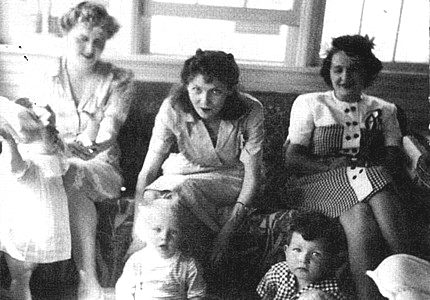

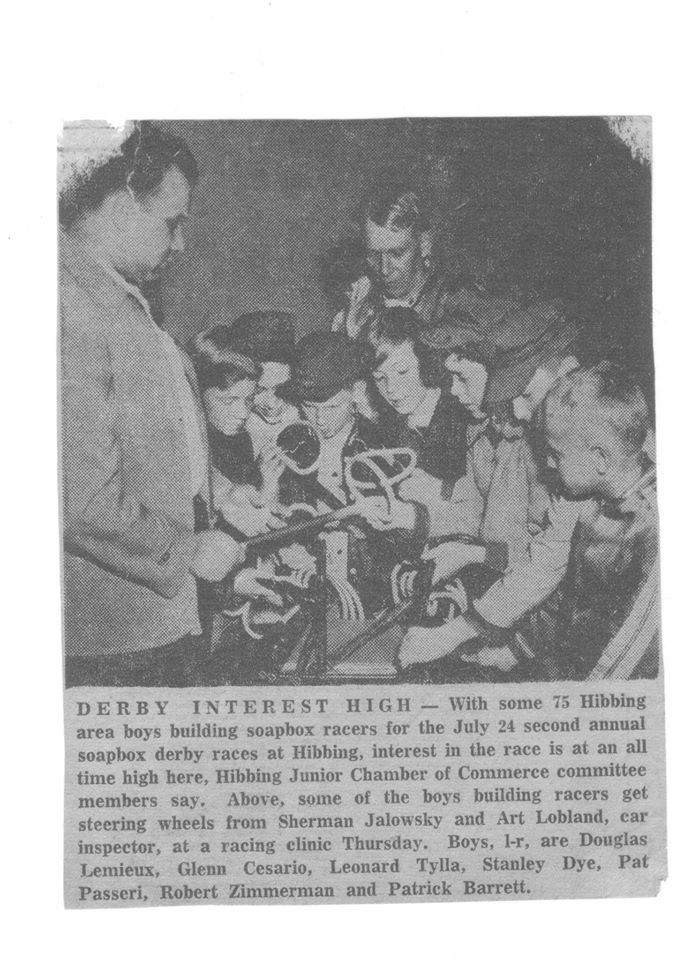
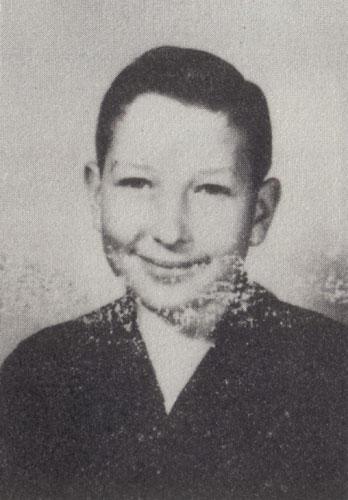
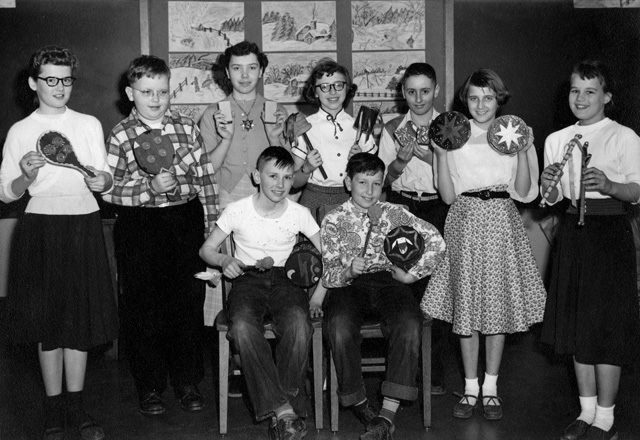
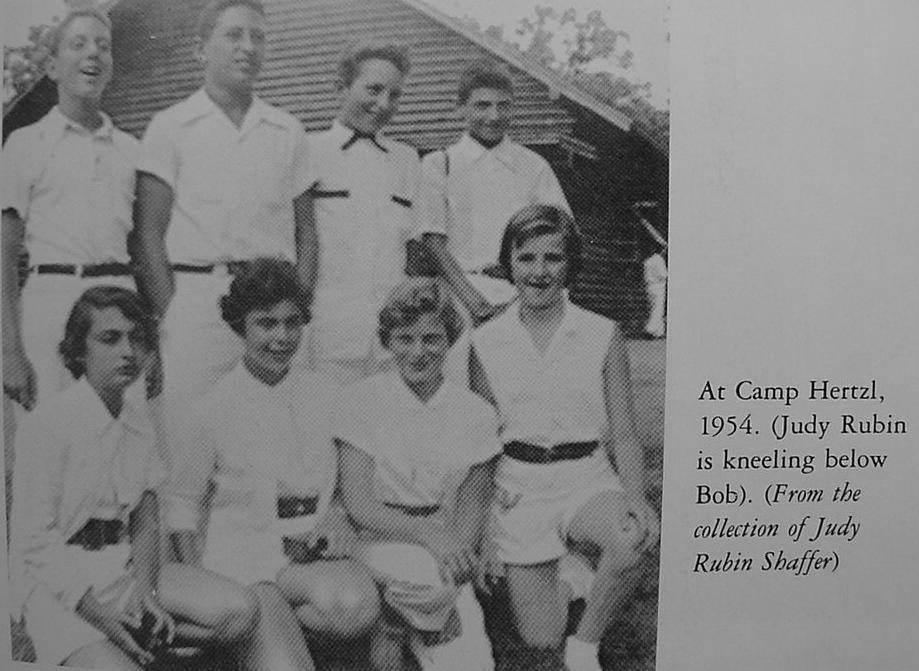
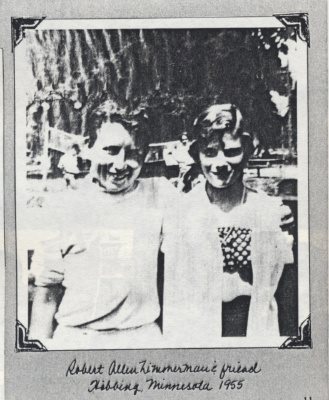
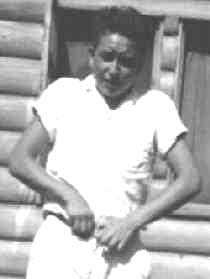
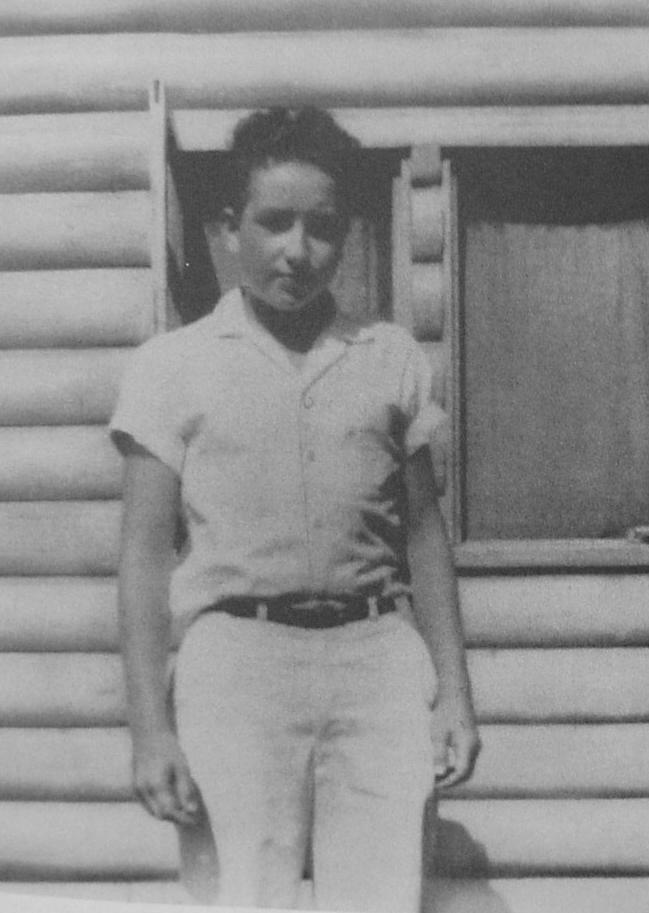


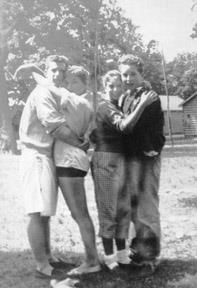
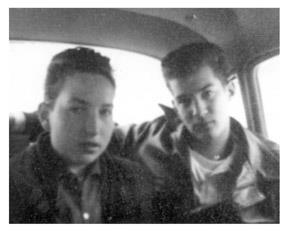

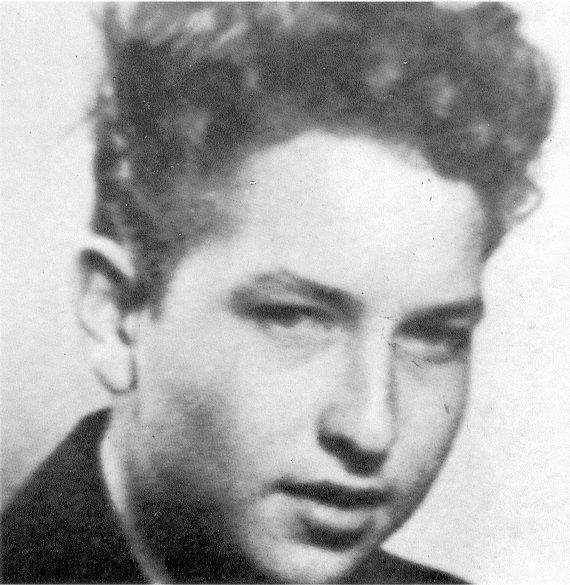
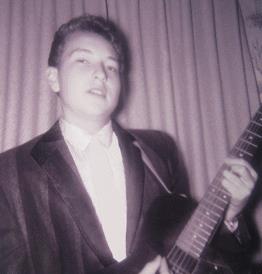
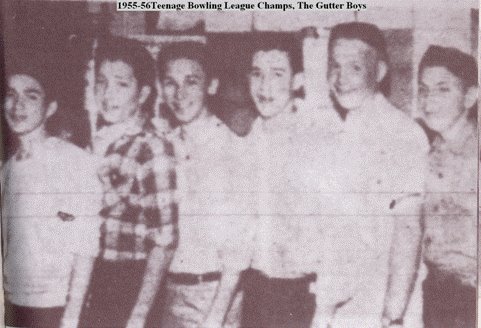

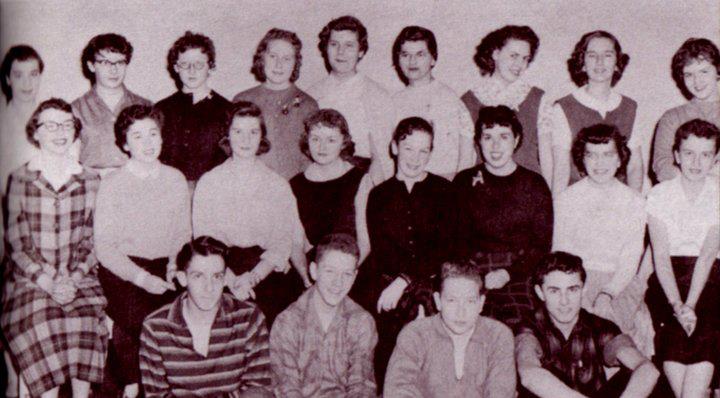
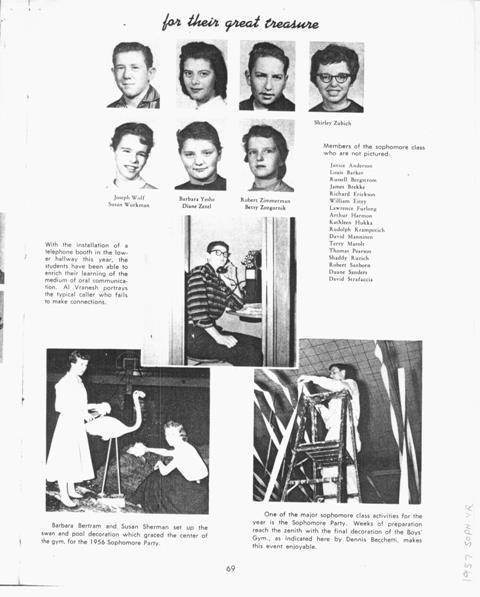
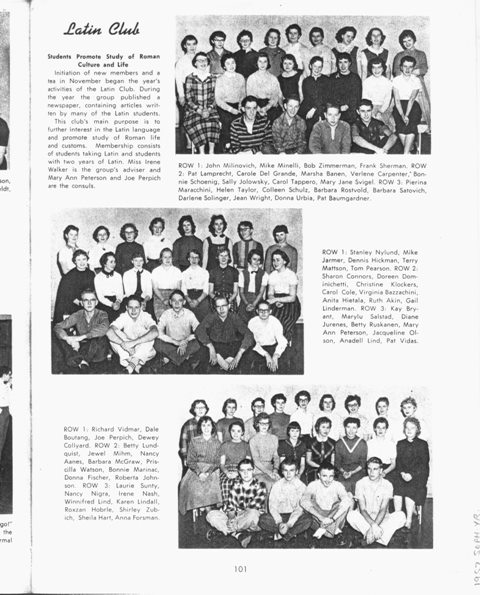
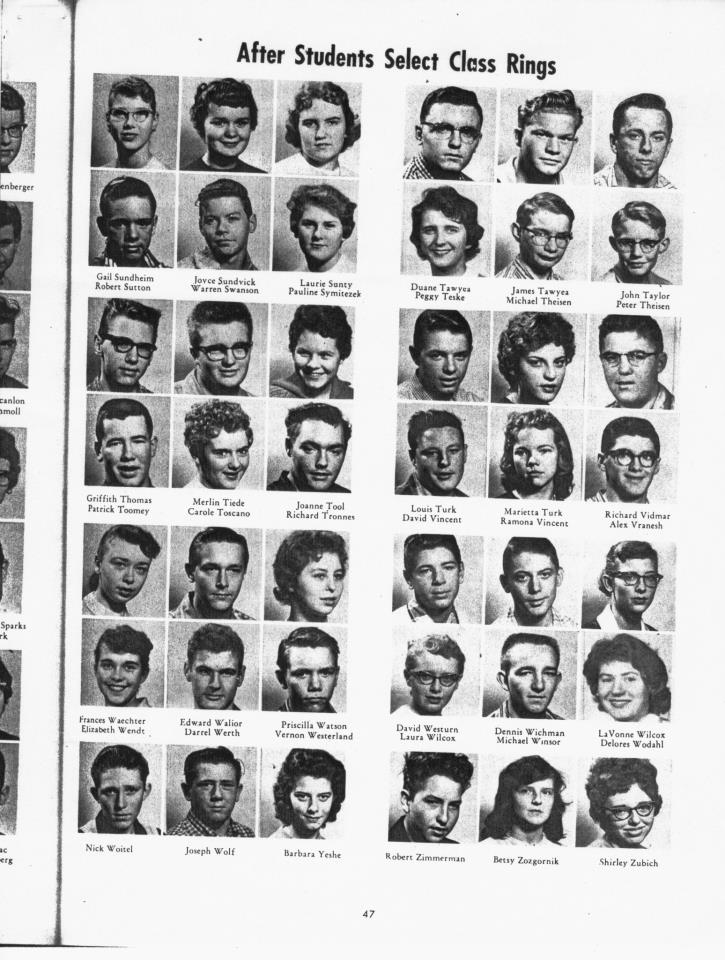
We are actively promoting a link to this interesting topic on The Bob Dylan Project at:
http://thebobdylanproject.com/Song/id/63/Big-Black-Train
If you are interested, we are a portal to all the great information related to this topic.
Join us inside Bob Dylan Music Box.